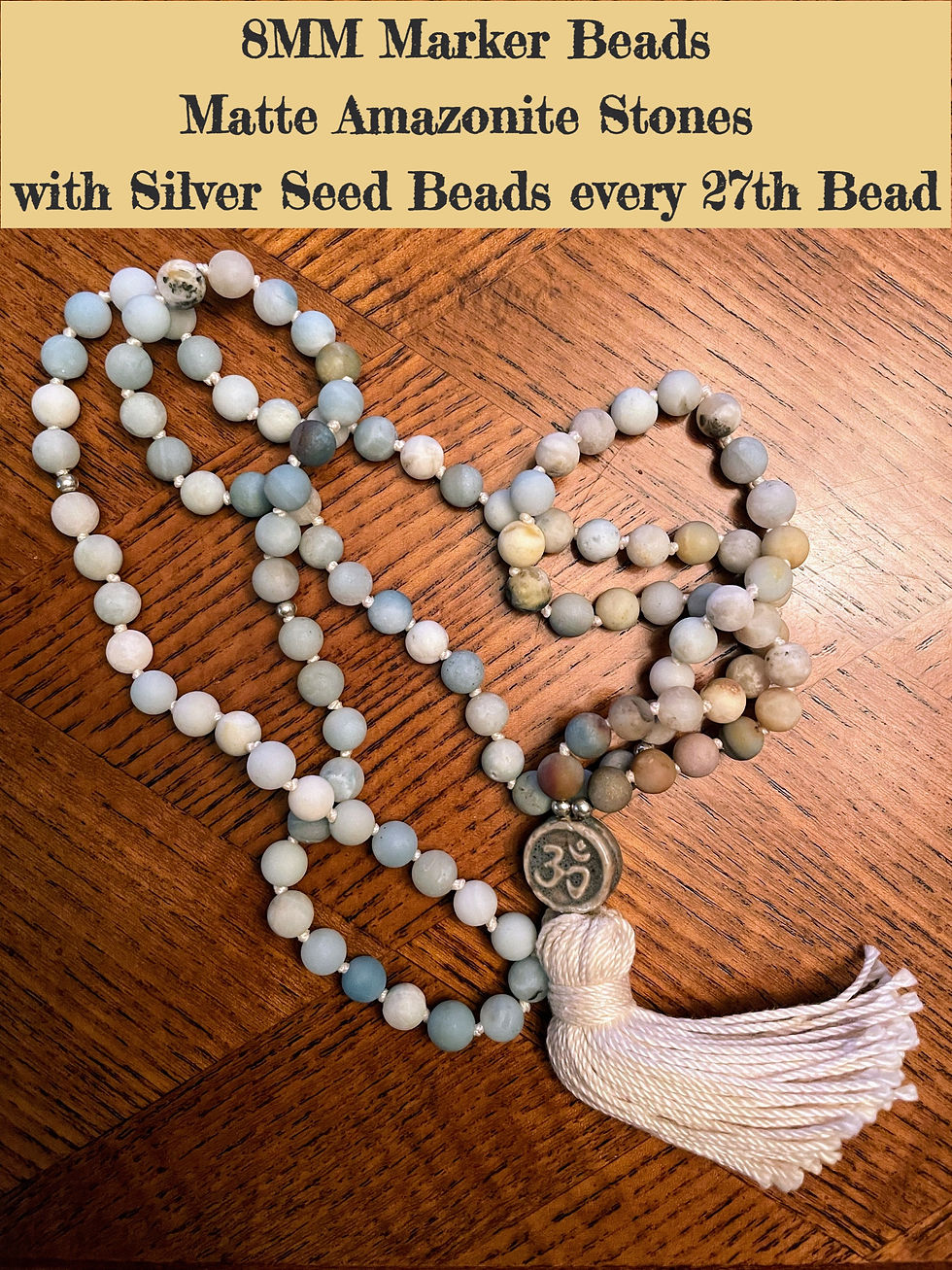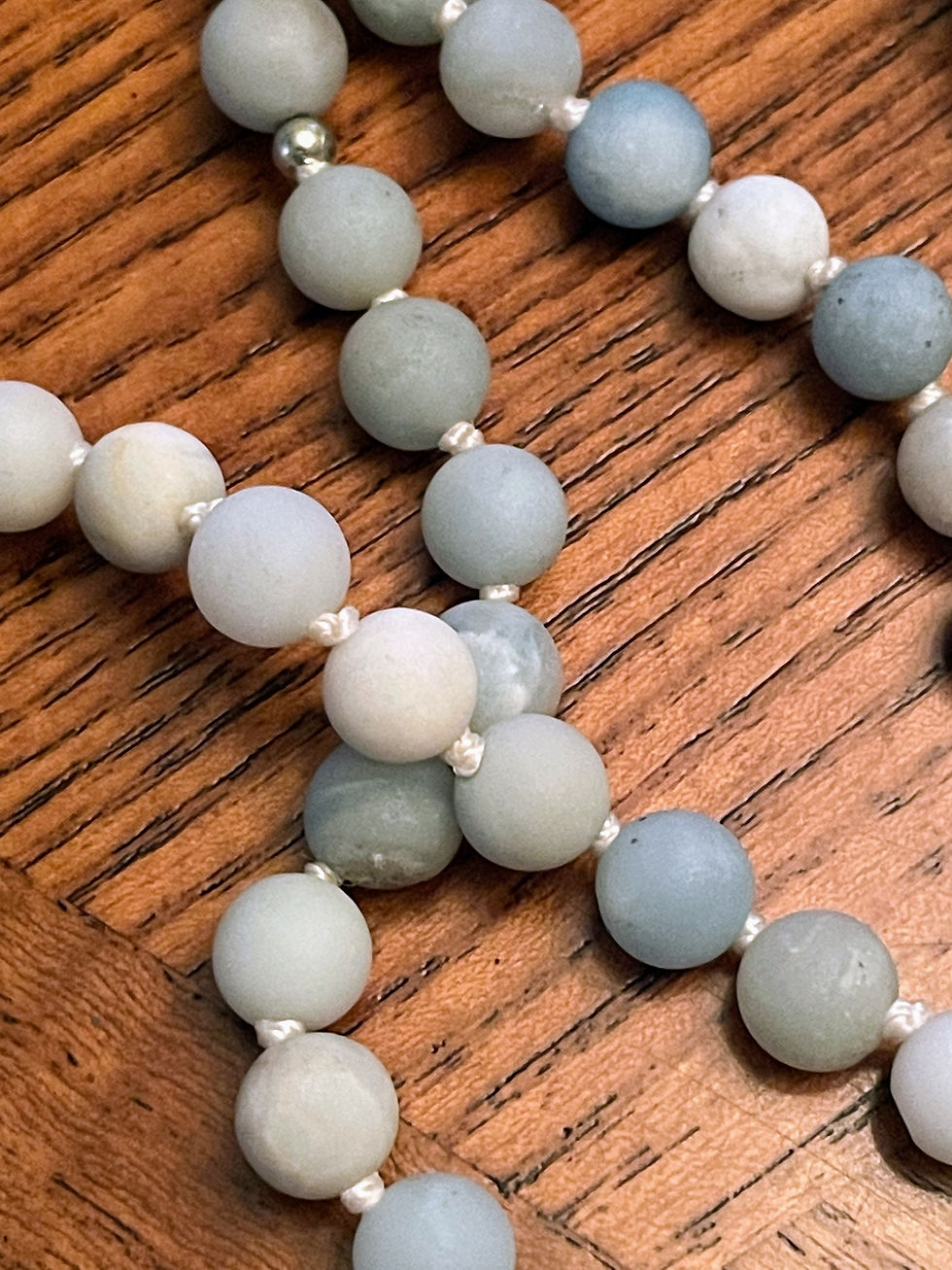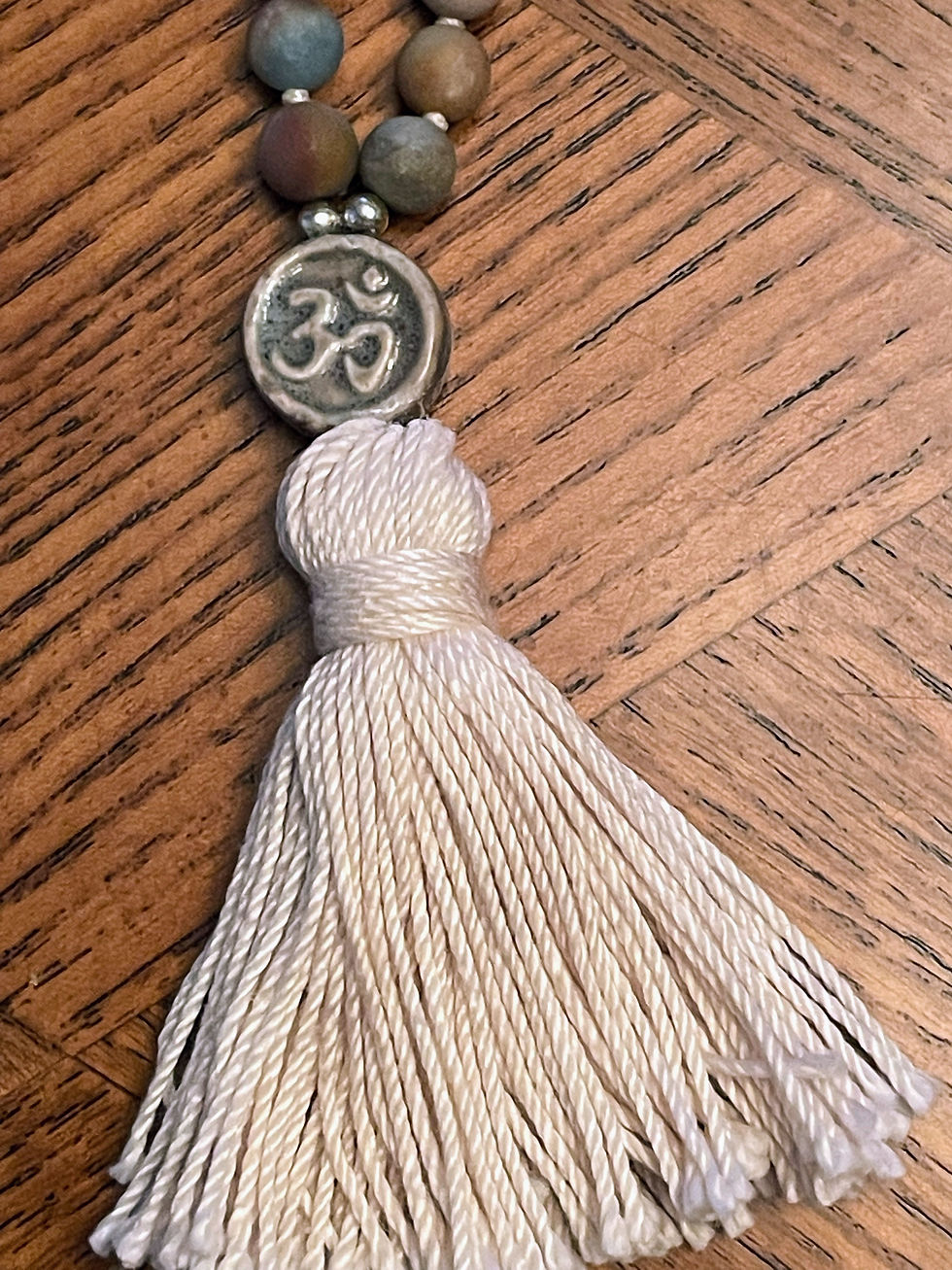'Mala' A Powerful Tool for Meditation
- Allison Graham

- Jul 11, 2022
- 3 min read

Meditation beads originated in Hindu and Buddhist religious traditions, they were used to count breaths or mantras. Malas can be made of any bead or stone that can be threaded, a cool, smooth, reassuring hold for anyone practicing meditation. They are typically made with four components; marker beads, knots, guru bead and tassel. In total, a Mala has 108 beads which is an auspicious number in many cultures. To name just a few, 108 is a holy number used in Hindu devotional practices and has meaning for healers and practitioners of the holistic healing system of Ayurvedic medicine. There are 108 Upanishads which are central to the Sacred Texts of Eastern Philosophy and Yogic practices. In yoga, 108 Sun Salutations are often practiced in honour of inevitable life changes. In Buddhism, the number 108 represents the number of afflictions or worldly sins we work to conquer through contemplation, meditation and daily practice. Marker or counter beads are used indicate the bead count or positioning in the mala. Marker beads are not always used, and the placement may vary by designer.
Beads 1-2: placed at the start to harness focus and begin the mantra or breath count practice;
Beads 21-24: a gentle reminder to re-focus if our mind has wandered;
Beads 85-88: a gentle indication that the end or turn-around point is coming;
Beads 107-108: indicates the end of the mala at which point one can end the practice or turn the mala around (do not skip over the Guru bead) and commence counting in the opposite direction.

Traditional malas are hand-knotted between each bead which signifies challenges that we meet in life, both large and small. The knots make the mala stronger and more resilient and serve as a reminder that all aspects of life are inter-connected.
The guru bead is the heart of any mala as it represents a significant teacher that we wish to honour whether it be Buddha, a Deity, God, or any spiritual teacher that has personal significance. It marks both the beginning and the end of a mala.
The final component of a mala is the tassel or amulet. There are many meanings attributed to the tassel, but three reasons have special significance

The tassel symbolizes the lotus flower which is significant in Yogic and Buddhist traditions. The lotus grows in muddy water, rising and blooming above the murk to flourish. This underlines our human potential and ability to meet, overcome and grow in the face of life’s challenges and ultimately achieve enlightenment;
Each strand of the tassel is an extension of the cord used to create the mala which binds not only the beads but binds us to the divine and to one another;
Lastly, with use the mala becomes infused with our intention and that positive energy is radiated out to the world through each strand of tassel and positive energy is received back through the tassel and into the mala.
Combined, these components provide a powerful companion and tool for your meditation practice. Each one carefully designed and hand-crafted for maximum potential and guidance throughout your spiritual journey.
Raymonde Martin-Venne is the artisan and owner of Beads & Stones. She is located in Sudbury ON and her beautiful malas, bracelets, necklaces and keychains are for sale at Power Yoga Canada Sudbury, 1380 Lasalle Blvd or you can order custom pieces by joining her Facebook Group 'Beads & Stones'. Raymonde highlights her current pieces regularly on this platform. #beadsandstones




Comments